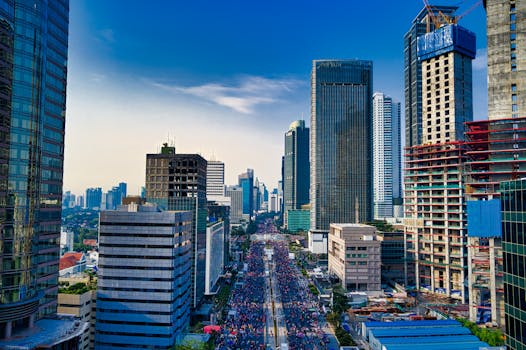
**
Dubai's 20-Minute City: Beating the 45°C Heat to Keep You Walking
Dubai, a city synonymous with luxury and innovation, is embarking on an ambitious project: the creation of a "20-minute city." This initiative aims to ensure residents can access essential services – from work and schools to healthcare and leisure – within a 20-minute walk or cycle from their homes. But in a city where summer temperatures regularly soar above 45°C (113°F), how does Dubai plan to keep its citizens walking, even in extreme heat? The answer lies in a multifaceted approach combining cutting-edge technology, innovative urban planning, and a commitment to sustainable infrastructure.
The Challenge of Extreme Heat in Urban Planning
Designing a walkable city in Dubai presents unique challenges. The intense desert heat poses a significant threat to pedestrian comfort and safety. Prolonged exposure to such temperatures can lead to heatstroke, dehydration, and other serious health issues. Traditional urban planning approaches simply wouldn't suffice. Therefore, Dubai's 20-minute city strategy addresses this head-on with a series of strategic interventions.
Technological Solutions for Pedestrian Comfort
Dubai is leveraging technology to make walking a viable and pleasant experience, even in extreme heat. Several key technologies are being employed:
- Smart shading systems: Dynamic shading structures, controlled by sensors and AI, adapt to the sun's position throughout the day, providing optimal shade in public spaces and along pedestrian walkways. This reduces direct sunlight exposure significantly.
- Advanced cooling technologies: The city is exploring the implementation of innovative cooling technologies, including misting systems, evaporative cooling, and even localized microclimates using strategically planted vegetation and smart ventilation systems. These technologies aim to lower the ambient temperature in key areas, making walking more bearable.
- AI-powered heat maps and navigation: Real-time heat maps, generated by a network of sensors and weather data, provide pedestrians with optimal routes to avoid the hottest areas. Apps can guide users to shaded pathways and cooler sections of the city, enhancing safety and comfort.
- Smart climate-controlled pathways: Certain walkways are being designed with integrated cooling systems embedded within the pavement itself, providing localized relief from the heat.
Urban Design Strategies for a Walkable Dubai
Beyond technology, Dubai's 20-minute city plan incorporates thoughtful urban design principles to promote walkability and minimize heat exposure:
- Strategic green spaces and landscaping: The integration of extensive green spaces, including parks, shaded walkways, and strategically planted vegetation, helps to lower ambient temperatures through natural evaporative cooling and shade provision. This approach transforms urban canyons into more breathable environments.
- Dense, mixed-use development: The concentration of residential, commercial, and recreational spaces within close proximity reduces the need for long commutes and promotes shorter walking distances. This minimizes exposure to the sun and heat.
- Pedestrian-friendly infrastructure: The city is investing heavily in pedestrian-friendly infrastructure, including wide, well-maintained sidewalks, clearly marked pedestrian crossings, and dedicated cycling lanes. These create safe and comfortable pathways for pedestrians and cyclists.
- Improved public transport connectivity: Enhanced public transport links ensure residents can easily access various points within the 20-minute radius even if walking isn't always feasible. This hybrid approach caters to all needs and ensures accessibility for everyone.
Sustainable Initiatives and Community Engagement
Dubai's commitment to sustainability is crucial to its 20-minute city vision. The plan focuses on:
- Renewable energy sources: Utilizing renewable energy sources to power the city's cooling infrastructure minimizes its carbon footprint and promotes environmental sustainability.
- Water conservation: Efficient irrigation techniques and water-wise landscaping reduce water consumption, a precious resource in the desert climate.
- Community engagement: The success of the 20-minute city relies heavily on community engagement. Dubai is actively involving residents in the planning process, gathering feedback, and ensuring the initiative meets the needs of its citizens. This participatory approach helps ensure buy-in and improves the overall outcome.
Challenges and Future Outlook
While ambitious, Dubai's 20-minute city plan faces certain challenges. The high cost of implementing advanced cooling technologies and the need for significant infrastructure investment are key considerations. Furthermore, changing long-established transportation habits and cultural norms will require sustained community education and awareness campaigns.
However, if successful, Dubai's 20-minute city model could serve as a blueprint for other cities facing similar challenges of extreme heat and urban sprawl. It demonstrates the potential for innovative urban planning and technological advancements to create comfortable, walkable, and sustainable urban environments, even in the most demanding climates. The project represents a significant step towards creating a more livable and resilient future for Dubai and potentially for cities worldwide battling similar environmental issues. The long-term impact on public health, sustainability, and quality of life will be closely monitored, making this a significant and highly observed urban development project globally.



















